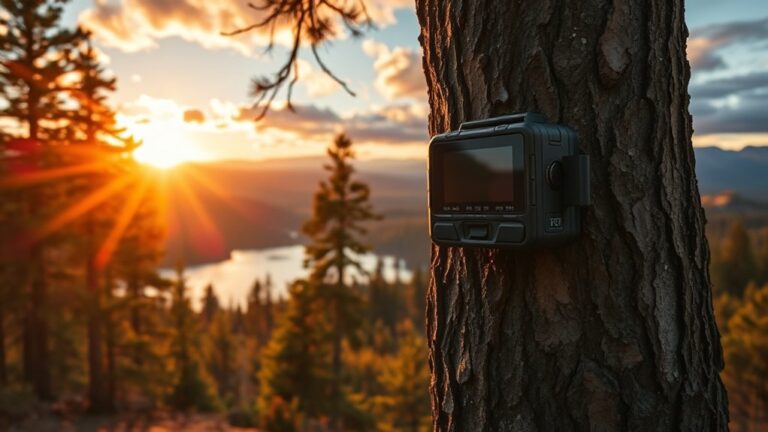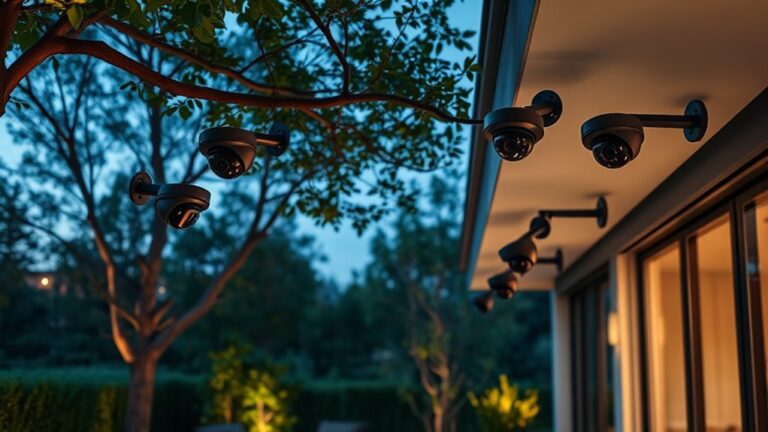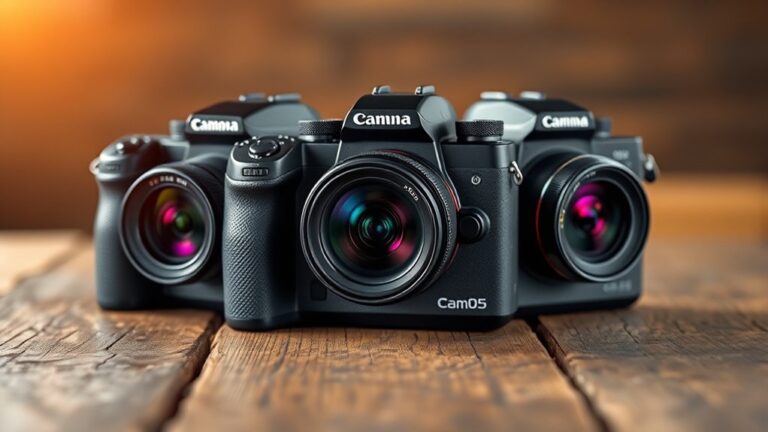Looking for a Micro Four Thirds camera in 2025? There are many models to choose from. Some are small and easy for beginners.
Others are professional-grade cameras for more experienced photographers. With so many options, it can be hard to pick the right one.
Knowing the strengths and limits of each camera helps you decide. Want to see which models are the best this year?
Let’s look at the top choices and what to think about before buying.
OM SYSTEM OLYMPUS E-M10 Mark IV Micro Four Thirds Camera (M.Zuiko ED 14-42mm F3.5-5.6 EZ Kit)
- 20 MP Live MOS Sensor
- Always-on connection and background connection via Bluetooth & OI Share Smartphone app
- Flip-down monitor and dedicated selfie mode. Selfie mode automatically turns on when monitor is flipped down.
If you want a small and easy-to-use camera that takes great pictures without costing too much, the OM SYSTEM Olympus E-M10 Mark IV is a good pick. It comes with the M.Zuiko ED 14-42mm F3.5-5.6 EZ kit. This camera has a 20 MP Live MOS sensor and uses the Micro Four Thirds system, making it lightweight and simple to carry. It has 5-axis in-body image stabilization, so your photos stay sharp even in low light. You can also shoot 4K videos to make videos as clear as your pictures. The flip-down touchscreen makes it easy to take selfies or shoot from high or low angles. Plus, it has built-in filters to help you get creative. You can connect it quickly with Bluetooth, Wi-Fi, and an app to share your photos fast. This camera is perfect for beginners and hobbyists who want a small, reliable camera that gives nice quality pictures and simple sharing.
Best For: Beginners and hobby photographers who want a small, easy-to-use camera with good photo quality and quick sharing options.
Pros:
- Small, light, and easy to carry around
- Takes sharp 20 MP photos with in-body stabilization for better low-light shots
- Includes fun features like a flip screen and filters for creativity
Cons:
- Sometimes the viewfinder glitches, and it can be slow to take pictures in fast-moving action
- Made mostly of plastic, so it might not be as durable
- Some app and Wi-Fi features can be tricky or slow at times
This camera gives beginners a good mix of quality, portability, and fun features while keeping things simple and affordable.
OM SYSTEM Olympus OM-1 Micro Four Thirds Camera Kit (12-40mm F2.8 PRO II, 20MP, Weather-Sealed, 5-Axis Stabilization)
- Cross Quad Pixel AF delivers 1,053 point, all cross-type 100% high-precision focusing
- TruePic X engine will deliver up to 3x faster processing power
- New 20M Stacked BSI Live MOS sensor provides amazing resolution and low noise
The OM SYSTEM Olympus OM-1 Micro Four Thirds Camera Kit is a great choice for wildlife and fast-moving subjects. It has a fast autofocus system with 1,053 focus points. This helps it lock onto subjects quickly and keep them in focus. The camera can shoot at 120 frames per second with an electronic shutter. This means you can capture action very smoothly and sharply.
The 20MP CMOS sensor produces clear, detailed images, even in low light. The camera has 5-axis in-body stabilization, which can give up to 8 stops of correction. This makes handheld shooting easier, even in tough conditions. It is weather-sealed, so you can use it outdoors without worry about rain or dust.
The camera also handles 4K/60p video well. It has a bright OLED viewfinder to help you frame your shots accurately. The camera features live ND and focus stacking, giving you more options for different scenes.
Who it’s for: Wildlife, bird, and action photo fans who want quick focus, good stabilization, and a tough design.
Pros:
- Fast autofocus with over 1,000 focus points
- Strong in-body stabilization for clear photos handheld
- Durable, weather-resistant body for outdoor use
Cons:
- It costs around $2200, which can be expensive
- Some older accessories don’t work perfectly with it
- A few users report autofocus glitches and dead pixels on the sensor
This camera is built for those who need speed, stability, and durability in their wildlife photos.
OM SYSTEM Olympus E-M10 Mark IV Micro Four Thirds Camera (M.Zuiko Digital ED 14-42mm F3.5-5.6 EZ Kit)
- 20 MP Live MOS Sensor
- Always-on connection and background connection via Bluetooth & OI Share Smartphone app
- Flip-down monitor and dedicated selfie mode. Selfie mode automatically turns on when monitor is flipped down.
The OM SYSTEM Olympus E-M10 Mark IV is a great camera for travelers and hobbyists. It is small and light, so you can carry it easily. The camera has a 20 MP Live MOS sensor. This sensor helps you take sharp and bright photos. The colors in your pictures will look real and vivid.
The camera also has a 5-axis in-body stabilization. This helps keep your shots clear, even in low light or when you’re holding the camera in your hand. If you like videos, you’ll enjoy the 4K recording. It captures professional-quality footage easily.
The flip-down touchscreen makes it simple to take selfies. You can also connect the camera to other devices quickly and share your photos. The user-friendly setup, including many filters and zoom options, makes it fun to be creative.
This camera is perfect for casual photographers and those who want a reliable, easy-to-use camera for travel.
Good things about it:
- Small and light, easy to carry everywhere
- 20 MP sensor makes sharp and vibrant images
- Stabilization keeps your photos clear, even in tricky conditions
Things to watch out for:
- It may take longer to shoot fast-moving subjects
- Sometimes the viewfinder has glitches and needs fixing
- The plastic body might not be as tough, and repairs can be harder to get support for
Panasonic LUMIX Micro Four Thirds Camera Lens, Leica DG SUMMILUX 9mm F1.7 ASPH
- Micro Four Thirds Lens for Professional Photographers and Videographers: High descriptive performance lens provides smooth, beautiful bokeh in photo and video;...
- Great for Photo Shooting and Video Recording: Ultra-wide lens for beautiful bokeh with exceptionally short focusing distance of 0.095m with an outstanding...
- Lightweight, Rugged Design: Compact, portable lens is easy to carry all day in comfort; dust/splash*/freeze-resistant design withstands heavy field use under...
If you’re looking for a small, high-quality lens for your camera, the Panasonic LUMIX Leica DG SUMMILUX 9mm F1.7 ASPH is a great choice. It works with all Micro Four Thirds cameras. The lens is lightweight and tough. It keeps out dust, splashes, and can handle cold weather. That makes it good for outdoor shots in tough conditions.
This lens gives sharp images and beautiful background blur. It has a bright F1.7 aperture, which helps in low light. The ultra-wide 9mm angle lets you capture large scenes easily. It’s smooth to focus and change the aperture, which is helpful for videos. It’s a versatile lens that works well for both photos and videos. It’s portable and reliable, perfect for many kinds of photography.
Best For: photographers and videographers who want a small lens that captures wide scenes and smooth videos.
Pros:
- Small and light, easy to carry around.
- Sharp images with nice background blur, thanks to Leica quality.
- Strong build that resists dust, splashes, and cold.
Cons:
- Fixed focal length, so you can’t zoom in or out.
- Costs more because it has Leica’s name and quality.
- Focuses closely to about 0.095 meters, so be careful with close-up shots.
This lens is a simple, high-quality option for anyone who wants great pictures and videos without carrying bulky gear.
Panasonic LUMIX GH5M2 Mirrorless Camera
- THE ICONIC GH5, NOW WITH LIVE STREAMING: Attention hybrid content creators—the GH5M2 supports both wired and wireless unlimited live streaming for indoors and...
- VIDEO FORMAT OPTIONS FOR PROFESSIONAL USE: The GH5M2 is capable of unlimited video recording in various settings including C4K/4K 60p 4:2:0 10-bit and...
- PHOTO STYLE PRESETS MINIMIZE YOUR EDITING: Presets include V-LogL, Cinelike D2/ V2, MonochromeS and L.ClassicNeo.
If you want a high-quality mirrorless camera for both videos and photos, the Panasonic LUMIX GH5M2 is a good choice. It has a tough magnesium body that can handle tough outdoor conditions. The camera is splash, dust, and freezeproof, so it stays safe in different weather.
It has a 20.3MP sensor that gives clear photos. For videos, it can shoot in 4K at 60 frames per second without limits. It also has special profiles to help you get high-quality footage. If you want to live stream, the GH5M2 can do that in unlimited time, whether by wire or Wi-Fi. It has two SD card slots for extra storage and better backup. The battery lasts longer, so you can shoot more without changing it.
The autofocus works well, and the camera can stabilize your videos to keep them smooth. Plus, it gives you many options for taking different types of photos.
Best For: Professional creators and videographers who need a tough camera that works well for videos and photos in tough environments.
Pros:
- Strong magnesium body that resists splashes, dust, and cold
- Great for videos with unlimited 4K/60p recording and special profiles
- Easy to connect for streaming, with two SD card slots and good audio ports
Cons:
- Some users find it hard to download RAW photos to Mac computers
- Not easy to use as a webcam without extra setup or updates
- Its price is higher, which may not suit everyone’s budget
TTArtisan 10mm F2 APS-C Ultra-Wide Camera Lens for Olympus and Panasonic MFT M4/3 Cameras
- 105° Angle of View: The best feature of the APS-C 10mm F2 ASPH lens is ultra-wide angle design. The full-frame equivalent focal length of 1mm allows it to...
- Nearly Zero Distortion: Barrel or pincushion distortions are less distorted when shooting wide scenes with the APS-C 10mm F2 ASPH. Ultra-wide-angle distortions...
- Create Amazing Portraitis: Compared to telephoto large aperture lenses, wide angle lens does a good job of including enough of the backgroud to give the...
The TTArtisan 10mm F2 lens is a great choice if you want an ultra-wide shot on Olympus or Panasonic MFT cameras. It offers a wide 105° view, so you can include more in your photos. The bright F2 aperture helps when you shoot in low light or at night. This makes it good for landscapes, city buildings, or capturing stars.
The lens is small and sturdy. It works with a 72mm filter holder, so you can add filters like ND or polarizers to control light and reflections. The lens has nearly no distortion, which keeps your images looking realistic. The big aperture also helps you take clear pictures in dark scenes or nighttime shots.
It’s a manual focus lens. This means you turn a ring to focus instead of pressing a button. It might take some practice at first, especially to get the focus right for distant objects. Some people notice dust or smudges on the front, but this doesn’t usually affect image quality. The lens doesn’t have autofocus, so you need to adjust focus by hand, which can be slower but allows for precise control.
Factors to Consider When Choosing Micro Four Thirds Cameras
When choosing a Micro Four Thirds camera, think about what matters most to you. Look at how clear your photos will be. Check if the camera is easy to carry around. Make sure it moves quickly when you want to focus on a subject. Decide if you need the camera to connect easily to Wi-Fi or Bluetooth. Also, see which lenses work with the camera and how many options are available. These things help you pick the right camera for your style and future photography needs.
Image Quality Capabilities
When choosing a Micro Four Thirds camera, it’s important to think about its image quality. Several factors affect how good your photos will look.
First, look at the sensor resolution. Most sensors have between 16 and 20 megapixels. More megapixels mean you can see more detail in your pictures and print bigger photos.
Next, consider the size of the sensor. Larger sensors usually do better in low light. They can gather more light, which helps you take clearer pictures in dark places. They also give a wider range of brightness, called dynamic range.
Lens quality matters too. Good lenses make images sharper, help with proper exposure, and reduce camera shake. This makes your photos look clearer and more professional.
Newer tech, like back-illuminated sensors, helps the camera see better in darker settings. These sensors are more sensitive and produce less noise, so your pictures look cleaner when using high ISO settings.
All these things — sensor resolution, size, and technology — work together. They influence how sharp, colorful, and noise-free your photos are. Think about these factors to find a camera that meets your needs and makes your photos look great.
Size and Portability
Size and portability are big advantages of Micro Four Thirds cameras. They are small and light, making them easy to carry. You can take them with you everywhere, even on long trips. Their compact size helps you shoot without drawing attention. This is great for street photos and social events. Smaller lenses made for these cameras also help keep the weight down. Having less gear to carry means less stress and easier storage in bags or backpacks. Plus, lighter cameras are more comfortable to hold during long photo sessions. If you want a camera that’s simple to move around with and easy to hide, Micro Four Thirds cameras are a good choice. They give you strong performance without extra bulk or weight.
Autofocus Performance
Autofocus performance in Micro Four Thirds cameras is important because it helps you take clear, sharp photos. Good autofocus is especially helpful in fast action or low-light situations. The number of autofocus points, especially cross-type points, affects how well the camera tracks moving subjects. Cameras with advanced autofocus use different methods like phase detection, contrast detection, and machine learning. These help the camera recognize subjects better and focus faster. Features like eye, face, and subject tracking make taking portraits or action shots easier. However, how well these work depends on the brand and camera firmware. Keeping your camera’s software up to date can improve autofocus speed, accuracy, and tracking. By understanding these factors, you can pick a camera that has reliable autofocus for your style of photography and the places you shoot.
Connectivity Options
When picking a Micro Four Thirds camera, it’s important to look at its connectivity options. These features help you work faster and share your photos easily. Built-in Wi-Fi and Bluetooth let you send pictures wirelessly. You can also control the camera remotely with your phone, which saves time. App links let you connect your phone for quick sharing and easy changes to camera settings.
USB-C ports are useful for moving files quickly, updating the camera’s software, or charging the camera. HDMI ports help you connect the camera to a bigger screen for better viewing. Wireless modules make live streaming, tethered shooting, and social media sharing simple and fast. Choosing a camera with these options keeps you connected and ready to share your work right away.
Lens Compatibility Range
When choosing a Micro Four Thirds camera, it’s important to look at the lens compatibility. This tells you how many types of lenses you can use with the camera. Micro Four Thirds cameras support many lenses made just for this system. These include zoom lenses, wide-angle lenses, telephoto lenses, macro lenses, and special types like fisheye and tilt-shift lenses. Most cameras let you change lenses, so you can pick the focal length, aperture, and features that fit your style.
The lenses usually connect to the camera with a standard mount. This makes it easier to find compatible lenses. Just check the mount type and sensor distance to avoid problems. The system also works with third-party lenses. Many different brands make lenses for Micro Four Thirds cameras, giving you lots of choices for all kinds of photography.
Video Recording Features
When choosing a Micro Four Thirds camera for video, look at its recording features. Make sure it can record in 4K or 6K at different frame rates, like 24p, 30p, or 60p. These options give you more flexibility for your videos.
Check if the camera has advanced options like 10-bit internal recording. This helps you get better color and details in your footage. Log profiles like HLG or V-Log are also useful. They let you capture more dynamic range and make color grading easier.
Look for cameras with good stabilization. In-body or digital stabilization keeps handheld shots steady. This makes your videos look smoother and more professional.
Make sure the camera has good audio inputs. Ports for microphones and headphones help you get clear sound and monitor audio as you record.
If you want to stream or connect to other devices, see if the camera has HDMI output or live streaming features. These options can make your filmmaking more flexible and fun.
Durability and Weather Resistance
Durability and weather resistance are important when you plan to use your camera outside or in tough conditions. A higher IP (Ingress Protection) number, like IP53 or IP54, means the camera is better at resisting dust and splashes. This helps the camera stay safe from dirt, rain, and water splashes. Cameras made with magnesium alloy bodies and sealed parts are stronger. They can handle rain, dust, and cold weather better. Some cameras can work well in very cold temperatures, even as low as -10°C. These are good for outdoor trips. Keep in mind, weather-sealed cameras tend to be heavier and cost more. They last longer and are more reliable. To keep your camera in good shape, use protective filters and avoid keeping it outside for too long in bad weather. Proper care helps your camera stay durable and work well over time.
Battery Life and Charging
When you choose a Micro Four Thirds camera, battery life is an important thing to think about. Good battery life means you can shoot for longer without stopping to recharge. This is useful when you’re outdoors or at events, and you want to take lots of pictures without worrying about how much power you have left. Some cameras let you charge their batteries through USB. This is handy because you can use a portable power bank to recharge your camera on the go. Battery capacity can be different from one model to another. Usually, larger batteries let you take around 300 to 500 shots per charge. If you want to keep shooting without breaks, it’s smart to have spare batteries and a quick charger. Keep in mind, features like Wi-Fi, Bluetooth, 4K videos, or taking many pictures quickly can make the battery run out faster. Picking a camera with good power management and easy charging options helps you stay ready for any photo session, no matter how long it lasts.
Last update on 2025-06-14 / Affiliate links / Images from Amazon Product Advertising API. Some of the links on this website are affiliate links, which means that at no additional cost to you, I earn a commission if you click through and make a purchase. I only recommend products and services that I believe will add value to my readers. Thank you for your support!






